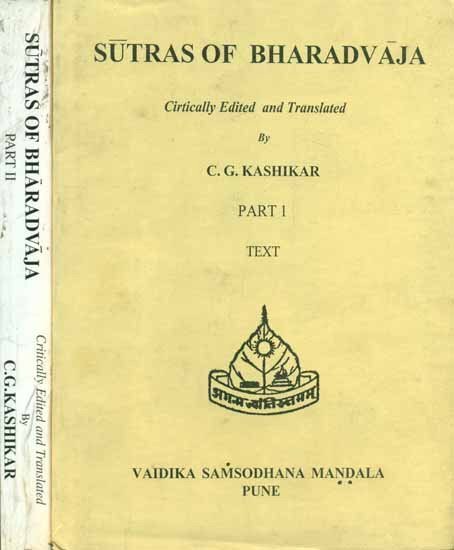Bharadvaja-srauta-sutra
by C. G. Kashikar | 1964 | 166,530 words
The English translation of the Bharadvaja-Srauta-Sutra, representing some of the oldest texts on Hindu rituals and rites of passages, dating to at least the 1st millennium BCE. The term Srautasutra refers to a class of Sanskrit Sutra literature dealing with ceremonies based on the Brahmana divisions of the Veda (Sruti). They include Vedic rituals r...
Praśna 4, Kaṇḍikā 5
1. He should stretch himself into either the Āhavanīya fire-chamber or the Gārhapatya fire-chamber.
2. Next day he should cross the altar to the rear of the Āhavanīya fire, and sit down to the rear of the Brahman’s seat, facing towards the Āhavanīya fire.
3. Sitting here only, he should follow the rites being performed.
4. He should follow the fires being strewn round[1] with the verse, “May the gods stay with me who (I) has strewn sacrificial grass round the two sacred fires. I stay with the domestic cattle so that I may be the lord of cattle.”[2]
5. He should follow the praṇītā-water being carried forth[3] with the formula, “Bhū and Ka, Vāc and Ṛk, Go and Vaṭ, Kha and Dhūr, Nūr and Pūr;” the verse, “The one-syllabled Virāṭs, having Pūr as the tenth, who have pervaded this Universe, do you, O goddesses, furnished with energy, and knowing, lead our sacrifice safely;” the formula, “You are purified by the Brahman; who unites you? Let him unite you for the offering to gods for fulfilling all desires;” and the verse, “Those which flow from the front, from above, and from all sides; with those which have rays as the strainer, I commence the sacrifice, the faith.”[4]
Footnotes and references:
[1]:
I.11.1; 16.1.
[2]:
Taittirīya-brāhmaṇa III.7.4.18.
[3]:
I.18.6.
[4]:
Taittirīya-brāhmaṇa III.7.4.1.
